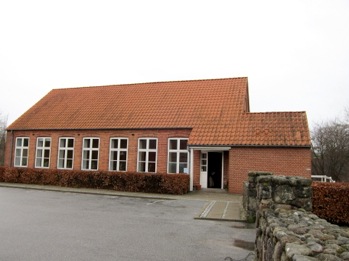SOLAR CELLS IN PARISH COMMUNITY CENTRES / CEMETERY FACILITIES
Solar cells
Installing solar cells on parish community centres, cemetery facilities and similar buildings located close to a church or in the cemetery, is not permitted for aesthetic reasons. However, if the building is located far from the church or in an urban area, permission can in some cases be obtained.However, with the current rules, in most cases, investing in solar cells isn’t financially sustainable.
Location
In addition to the aesthetic considerations, there are other conditions that must be observed. First, it must be examined whether the roof can carry the additional weight of the panels. Also, it must be ensured that there are no shadows over parts of the solar panels, as this will reduce output significantly.
After November 20, 2012, the placement of solar cells is very important for the economy of a solar power system is. Due to new regulations that settle the price by the hour, it is important to use most of the power produced by the solar cells within the same hour as it is produced.
In a parish community centre with offices, a southern orientation of the solar cells could be a good idea.
Permission
Before the installation of solar cells a permission must be given. Contact must be made to the diocese and to the municipality. The diocese magistrate then gathers statements from relevant consultants.
Economy
With the current rules for the settlement of electricity from solar cells, it is crucial for the economy, that a very large part of the produced electricity is used immediately in your own installation. Electricity produced and used immediately replaces purchased power at full price (approximately 2.10 kr. per kWh). Any excess electricity produced is settled at market price, which at present is in the range of 20 - 30 øre per. kWh.Own-consumption should be above 50%, to achieve a sound economy with a repayment period of 15 years. By installing smaller solar cell systems, it is easier to achieve a high level of own consumption.
Example
In 2013 a permission for installing solar cells on an "Annex Building" in Langaa was given, after remarks from the Royal Buildings Surveyor, the National Museum and Church Ministry heating consultant were given.
These assessments included both the location of the solar panels and the future operating costs. Permission was granted, because the annex building and the solar cell installation are not visible from the church. It was further estimated that an own- consumption of around 40% could be achieved, which corresponded to a payback period of 15 years with the rules and prices at the time.

Read more (in Danish):
Danish Energu Agency for solar cells: http://sparenergi.dk/forbruger/el/solceller